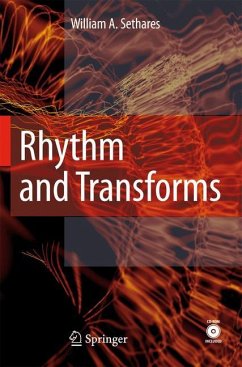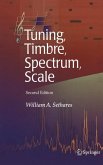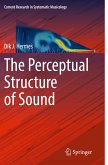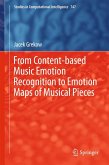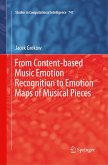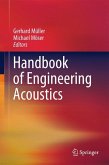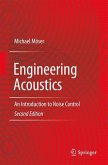People naturally identify the rhythm of music as they tap their feet and sway in time with the beat. Underlying such motions is an act of cognition that is not easily reproduced in a computer program or automated by machine. "Rhythm and Transforms" asks (and answers) the question: How can we build a device that can "tap its foot" along with the music? The result is a tool for detecting and measuring the temporal aspects of a musical performance: the periodicities, the regularities (and irregularities), the beat, the rhythm. The impact of such a "rhythm meter" on music theory and on the design of sound processing electronics is described. It allows discussion of the relationship between cognitive processing of temporal information and mathematical techniques used to describe and understand regularities in data.
This book will interest engineers and others interested in the design of audio devices such as musical synthesizers, special effects devices, drum machines, and electronic keyboards. It will be useful to musicians and composers who exploit computer-based tools; arrangers, musicologists, and others interested in musical analysis; and those interested in the way the ear works, and how this influences the types of sound patterns we like to listen to. A unique approach to working with environmental sounds is provided, with clear applications to the synchronization of audio with video.
A CD-ROM comes with the book containing audio examples which demonstrate the book's ideas in addition to a suite of programs (a Matlab® "toolbox") which allows readers to reproduce many of the of these ideas' results.
This book will interest engineers and others interested in the design of audio devices such as musical synthesizers, special effects devices, drum machines, and electronic keyboards. It will be useful to musicians and composers who exploit computer-based tools; arrangers, musicologists, and others interested in musical analysis; and those interested in the way the ear works, and how this influences the types of sound patterns we like to listen to. A unique approach to working with environmental sounds is provided, with clear applications to the synchronization of audio with video.
A CD-ROM comes with the book containing audio examples which demonstrate the book's ideas in addition to a suite of programs (a Matlab® "toolbox") which allows readers to reproduce many of the of these ideas' results.
From the reviews:
"Rhythm and Transforms, is a fitting sequel. ... There is no doubt that Sethares is a good writer ... . His extensive glossary will be a great help to those who are encountering some of the ideas for the first time ... . Overall, Rhythm and Transforms is a worthwhile addition to the literature. I'm sure it will find a place ... in many personal libraries, as it will in mine." (Thomas D. Rossing, Physics Today, August, 2008)
"This book is about understand the link between the physical stimuli and the subsequent cognitive responses, with the goal of developing algorithms to assist with various applications ... . this book contains good material to motivate the interests of students about the 'importance of mathematics in applications.' ... Your brain will enjoy the entrainment such synchronization performs between electrical impulses and the words in this book." (Robert S. Anderssen, SIAM Review, Vol. 50 (3), 2008)
"This book explores the temporal and rhythmic relationships between sounds and the structure of music, between perceptual aspects of the human auditory system and the sound machines ... . This book is useful for engineers and musicians interested in the design of audio devices." (Manfred Tasche, Zentralblatt MATH, Vol. 1189, 2010)
"Rhythm and Transforms, is a fitting sequel. ... There is no doubt that Sethares is a good writer ... . His extensive glossary will be a great help to those who are encountering some of the ideas for the first time ... . Overall, Rhythm and Transforms is a worthwhile addition to the literature. I'm sure it will find a place ... in many personal libraries, as it will in mine." (Thomas D. Rossing, Physics Today, August, 2008)
"This book is about understand the link between the physical stimuli and the subsequent cognitive responses, with the goal of developing algorithms to assist with various applications ... . this book contains good material to motivate the interests of students about the 'importance of mathematics in applications.' ... Your brain will enjoy the entrainment such synchronization performs between electrical impulses and the words in this book." (Robert S. Anderssen, SIAM Review, Vol. 50 (3), 2008)
"This book explores the temporal and rhythmic relationships between sounds and the structure of music, between perceptual aspects of the human auditory system and the sound machines ... . This book is useful for engineers and musicians interested in the design of audio devices." (Manfred Tasche, Zentralblatt MATH, Vol. 1189, 2010)

